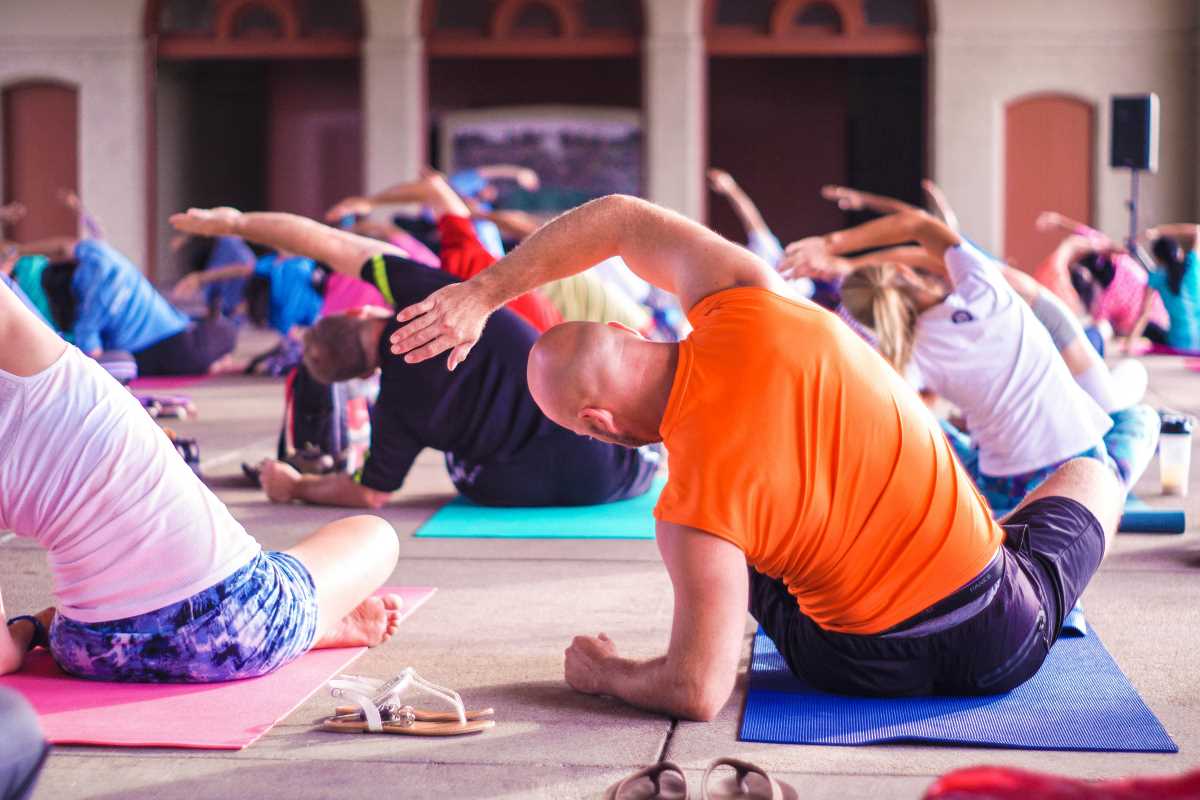As we age, our bodies undergo numerous changes, some of which can make maintaining mobility and independence more challenging. One key aspect of healthy aging that often goes unnoticed is flexibility. Flexibility, which refers to the ability of muscles and joints to move through their full range of motion, plays a vital role in maintaining physical health, preventing injuries, and promoting mental well-being. Research shows that regular stretching and mobility exercises can help older adults stay active, improve their quality of life, and potentially extend their independence. Let’s explore why staying flexible is so important for healthy aging.
Flexibility Helps Prevent Injury
One of the most significant benefits of maintaining flexibility is its role in injury prevention. As we age, our muscles, tendons, and ligaments tend to become stiffer and less pliable, which can increase the risk of injury during even simple movements. Reduced flexibility, coupled with age-related balance decline, is one of the leading contributors to falls in older adults. In fact, the Centers for Disease Control and Prevention (CDC) reports that about one in four Americans aged 65 and older falls each year, and falls are a leading cause of injury-related deaths in older adults .
Regular stretching exercises can help improve flexibility by increasing the range of motion in joints and reducing muscle tension, both of which play a key role in enhancing balance and coordination. Dynamic stretching, in particular, can prepare the muscles for more vigorous activities, reducing the risk of strain or injury. Additionally, research has found that static stretching after activity can improve flexibility over time, helping older adults prevent injuries while maintaining an active lifestyle .
Enhances Joint Health
Maintaining flexibility is also critical for joint health. Joint stiffness is common with age and is often linked to conditions like osteoarthritis, which affects millions of older adults worldwide. Studies have shown that regular stretching can help increase blood flow to the joints, improving circulation and nourishing joint tissues with essential nutrients. Stretching also supports the elasticity of connective tissues, which can relieve joint pain and reduce discomfort associated with arthritis .
Moreover, the cartilage that cushions our joints needs movement to stay healthy. The American Academy of Orthopaedic Surgeons (AAOS) notes that stretching helps to keep cartilage healthy by improving the synovial fluid, which lubricates the joints . This fluid acts as a cushion, helping to reduce the friction between bones, which is critical for preventing stiffness and maintaining mobility as we age.
Improves Posture and Alignment
Another reason flexibility is important for aging is its impact on posture and body alignment. Poor posture, which can worsen with age, contributes to a range of musculoskeletal issues, including back pain, neck tension, and reduced mobility. Prolonged sitting, slouching, or poor posture habits can cause certain muscles to become tight and others to weaken, leading to imbalances in the body.
Regular flexibility exercises targeting key muscles, such as the hip flexors, hamstrings, and upper back, can help correct these imbalances, promote better alignment, and reduce discomfort. Improved posture not only alleviates pain but also contributes to better balance and stability, reducing the risk of falls. Stretching exercises like yoga, which emphasize both flexibility and balance, have been shown to improve posture and reduce back pain in older adults .
Boosts Mental Health
In addition to the physical benefits, staying limber can also improve mental health. Stretching helps release muscle tension and encourages relaxation by triggering the body’s parasympathetic nervous system, which helps lower stress hormones like cortisol. This relaxation response can enhance feelings of calm and well-being, which is especially beneficial for older adults, many of whom may experience anxiety or depression.
Furthermore, stretching promotes better circulation, which enhances blood flow to the brain. Increased circulation delivers oxygen and nutrients to brain cells, supporting cognitive function and mental clarity. A study published in the Journal of Gerontology found that regular physical activity, including flexibility exercises, can improve cognitive function in older adults, helping to slow age-related mental decline .
Promotes Independence and Active Living
One of the most important benefits of maintaining flexibility is its role in preserving independence and promoting an active lifestyle. Flexibility allows older adults to perform everyday tasks more easily, such as bending to tie shoes, reaching for objects, or getting in and out of a car. As we age, these tasks can become more difficult, and a loss of flexibility can significantly limit mobility.
By incorporating regular stretching and mobility exercises, older adults can maintain their ability to move freely, preventing the stiffness and discomfort that often accompanies aging. Maintaining flexibility also allows older adults to engage in activities they enjoy, such as gardening, walking, or participating in social events, which can enhance their quality of life and reduce feelings of isolation.
Flexibility Exercises for Healthy Aging
To maintain flexibility as we age, incorporating a variety of stretching and mobility exercises into daily routines is essential. Some examples include:
- Dynamic stretches: Movements that prepare muscles for activity, such as leg swings or arm circles.
- Static stretches: Holding a stretch for 15-30 seconds, like reaching for your toes or stretching your arms overhead.
- Yoga or Pilates: These practices focus on flexibility, balance, and core strength, making them ideal for older adults looking to improve mobility and posture.
Incorporating these exercises into your routine can help you stay flexible and active as you age.
Conclusion
Staying limber through flexibility exercises is a crucial aspect of healthy aging. Stretching not only helps prevent injuries, maintain joint health, and improve posture, but it also enhances mental health and promotes a more active, independent lifestyle. By prioritizing flexibility, older adults can enjoy improved well-being and a higher quality of life. Remember, it’s never too late to start incorporating stretching and mobility exercises into your routine. The benefits of staying flexible can be profound, leading to a healthier, happier aging process.
 (Image via
(Image via





